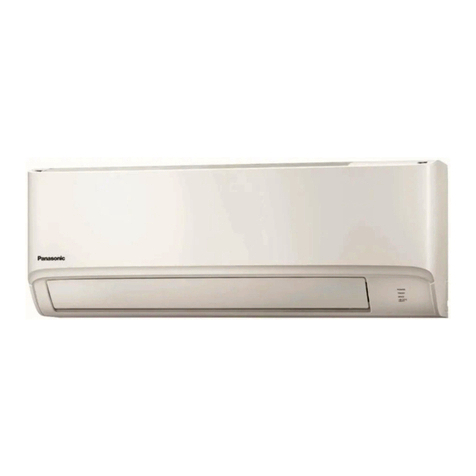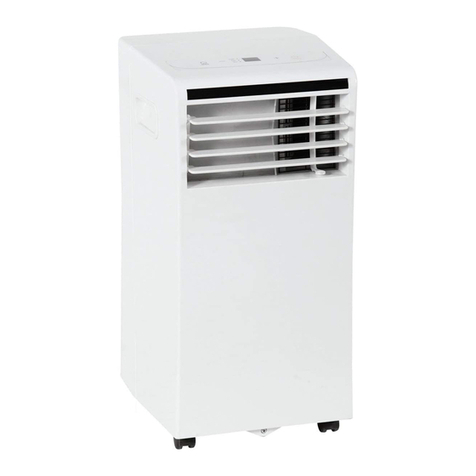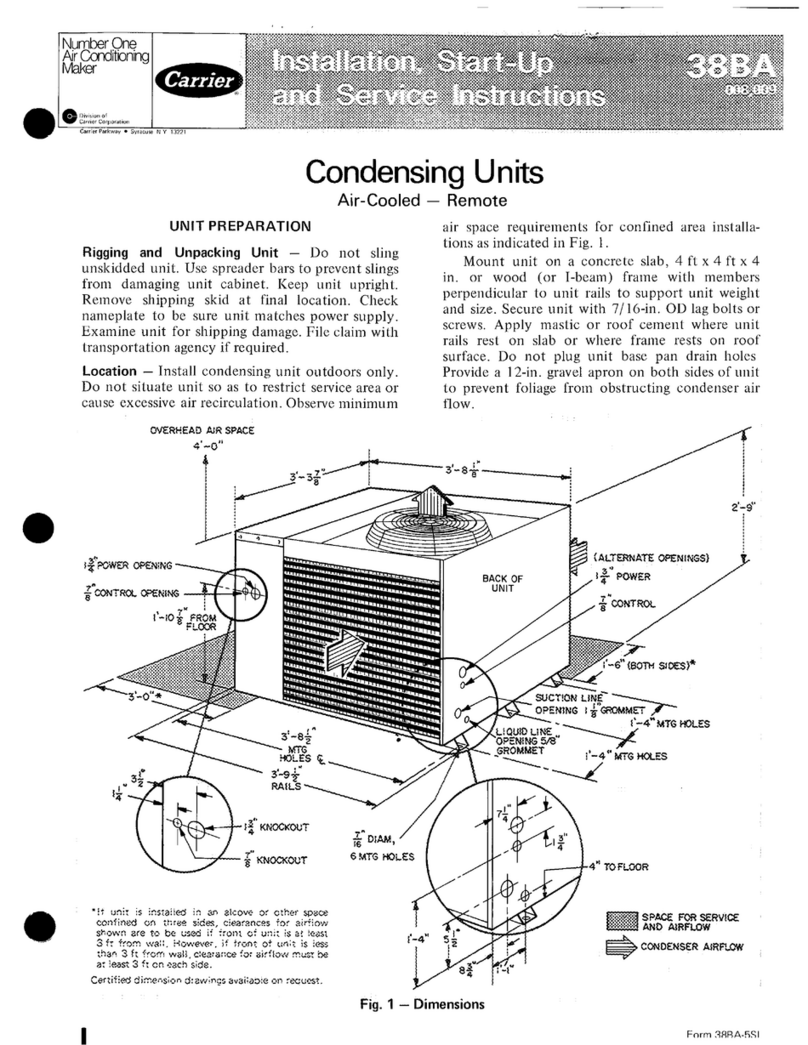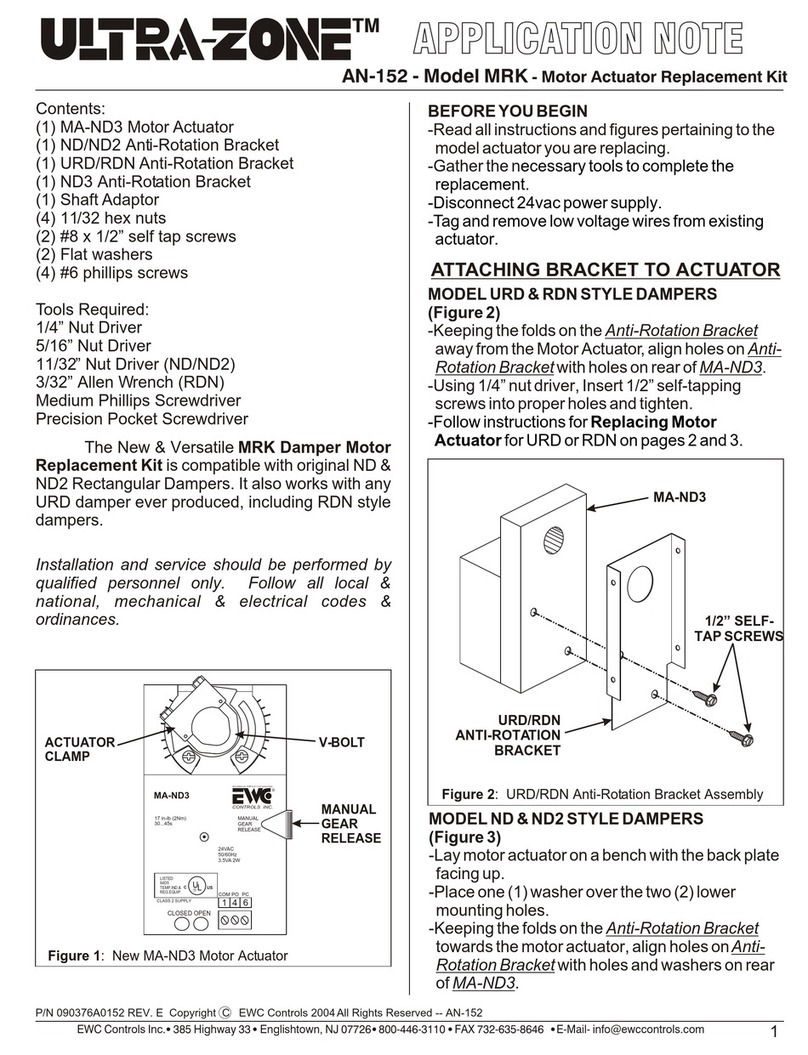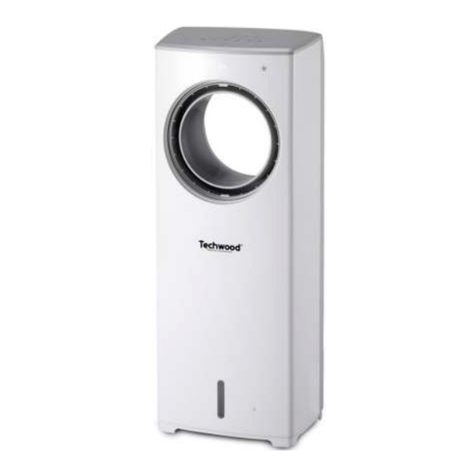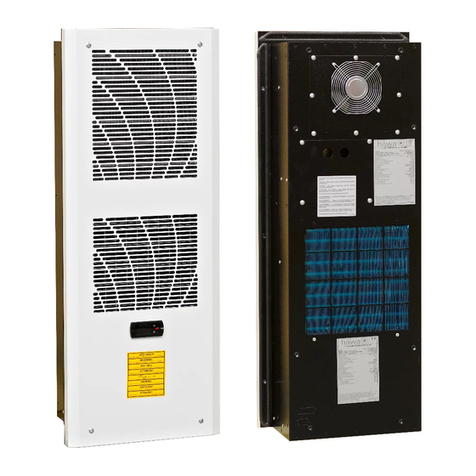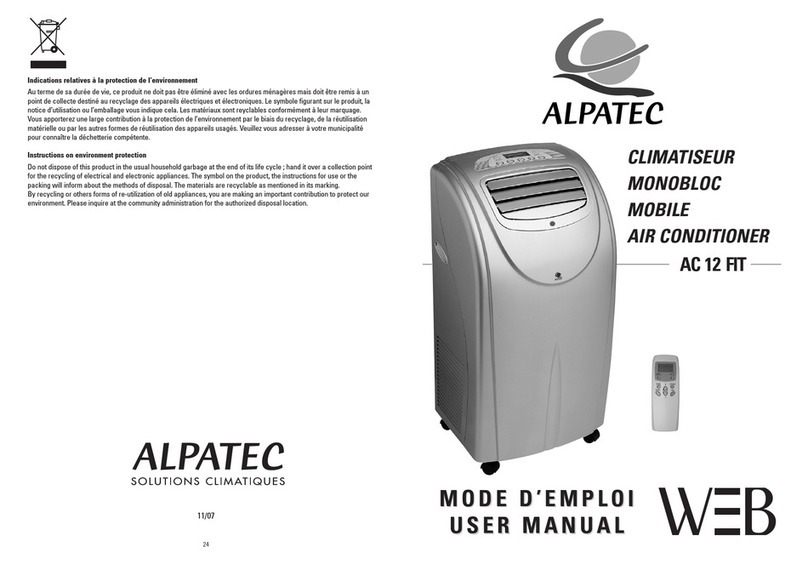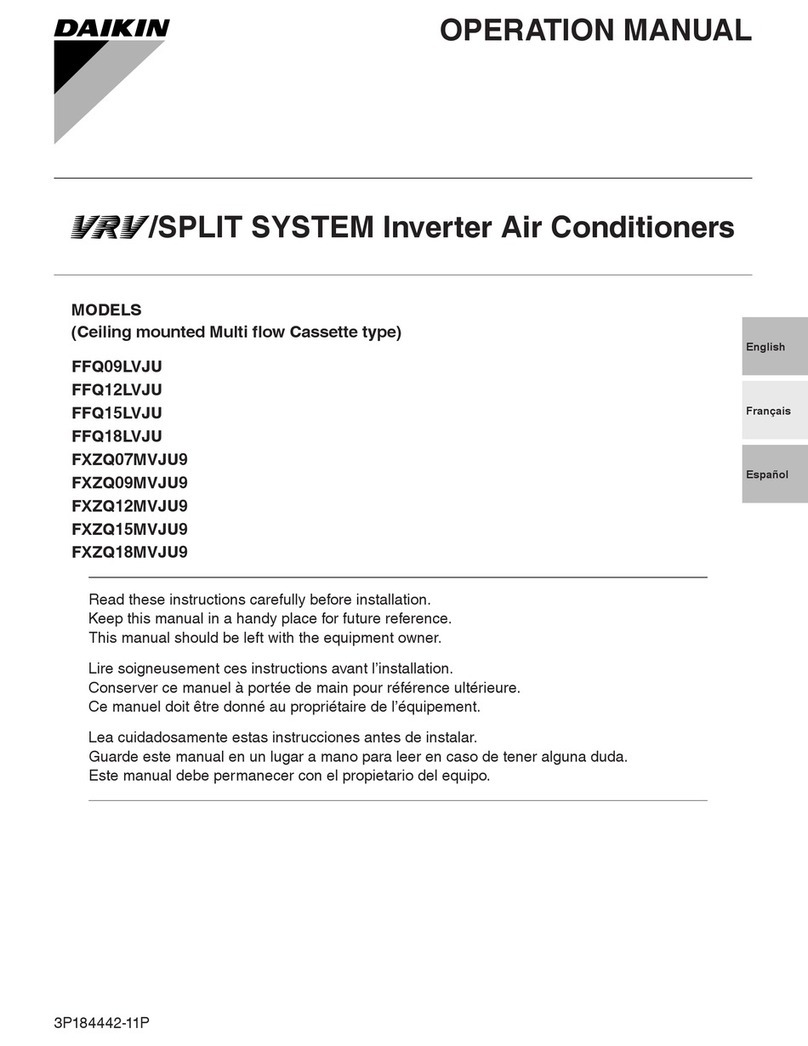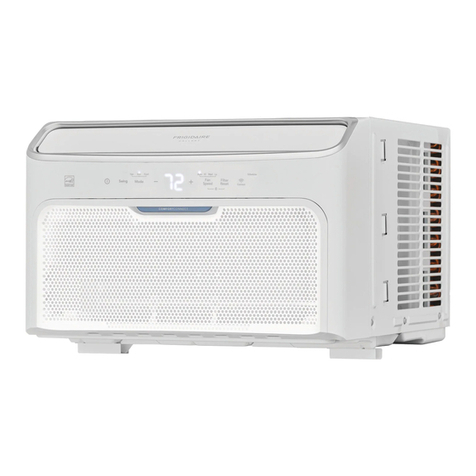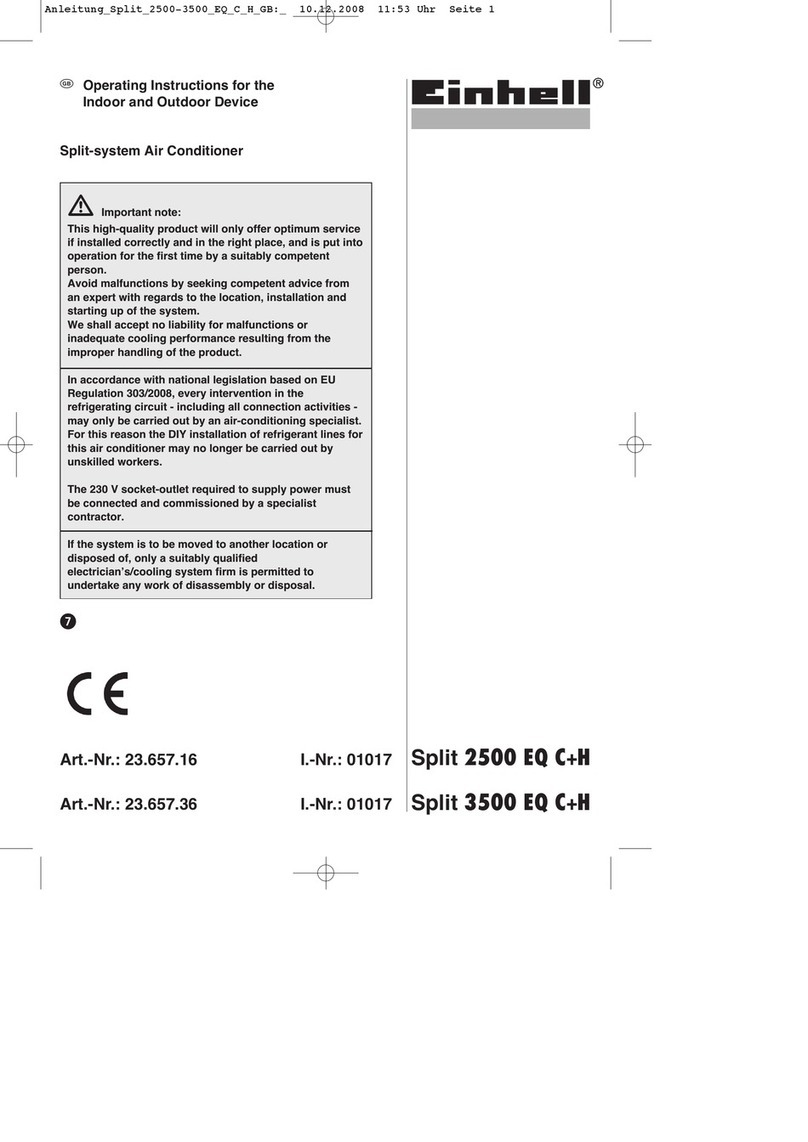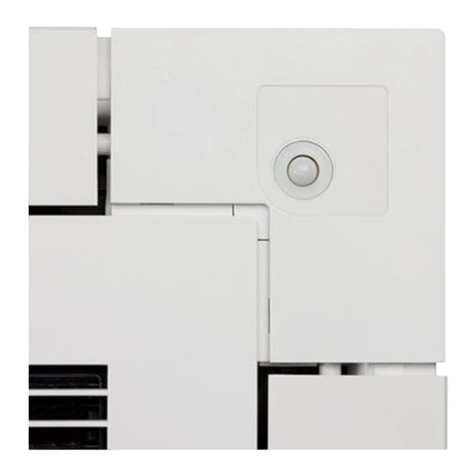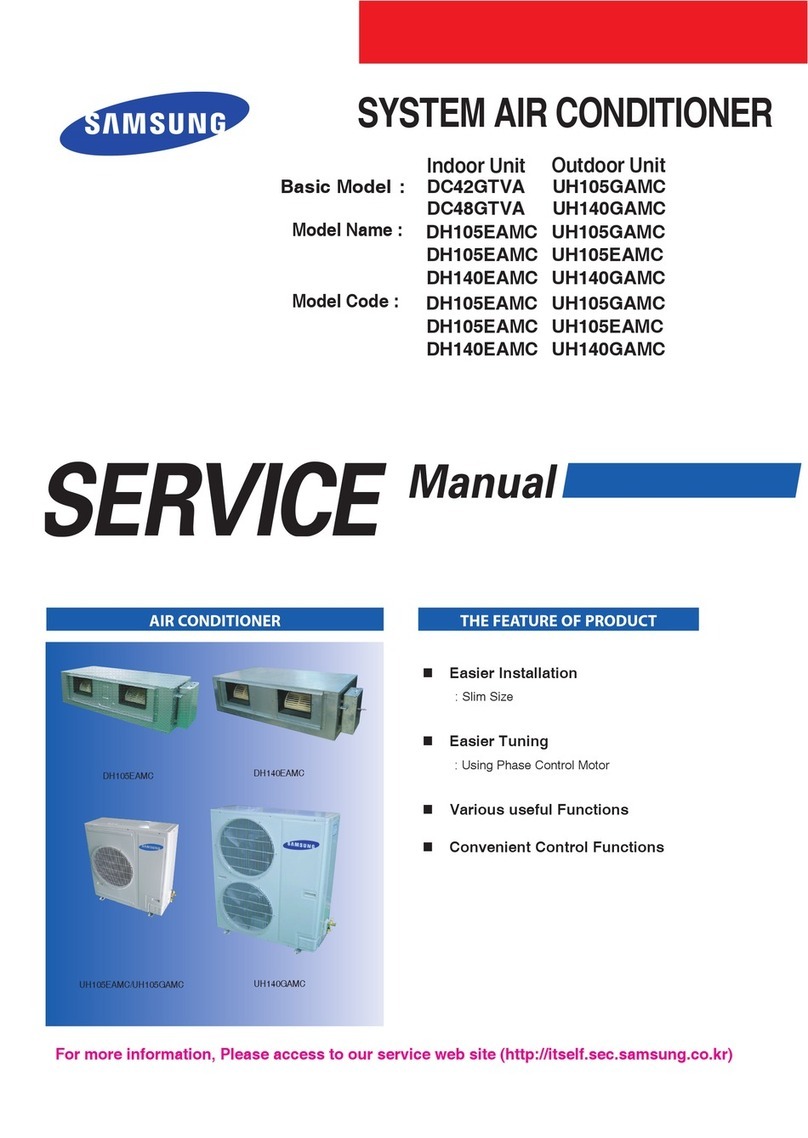
EWC
Controls
Inc.
385
Highway
33
Englishtown,
NJ
07726
800-446-3110
FAX
732-446-5362
E-Mail-
[email protected]2
BYPASS SIZING EXAMPLE ** see note belowBYPASS SIZING EXAMPLE ** see note below
1. Install the CLBD bypass damper in horizontal or vertical bypass duct.
2. Route the bypass airflow from the main supply air plenum or manifold back into the return duct as shown on
page 1. Or you can route the bypass airflow into a seldom used area or room that has a return air grille. Do Not
route bypass air into a non-conditioned area such as an attic or crawl space.
3. If possible, connect the bypass duct to the return duct, 6 feet (or more) away from the air handler.
4. If a Balancing Hand Damper is installed, you should balance the bypass duct first by referring to Application
Note #090376A0169D.
5. The CLBD comes factory set at 0.5”wc and will function correctly for most residential HVAC applications
right out of the box. No further adjustment is required. If necessary, follow the additional steps below.
6. Energize ALL zones to operate the HVAC system with the indoor fan running on the highest speed. (Usually
a cooling demand, 2nd stage if applicable). Confirm the CLBD is closed.
7. Next, turn off all larger cfm zones (one at a time) except the smallest cfm zone & wait for the zone dampers
to move fully closed or nearly closed, if they are adjusted to allow some leakage.
8. Now, monitor the airflow in the smallest zone.
* If there is to much airflow/noise in the smallest zone, adjust the CLBD static pressure setting lower.
* If there is insufficient airflow in the smallest zone, adjust the CLBD static pressure setting higher.
9. To adjust the CLBD, simply turn the “Adjustment Knob” to select a lower static pressure setting or a higher
static pressure setting.
10. Congratulations, your CLBD Bypass Damper is now properly adjusted.
CONSTANT LOAD BYPASS DAMPER INSTALLATION AND SETUPCONSTANT LOAD BYPASS DAMPER INSTALLATION AND SETUP
1. Start with the HVAC system’s Total CFM (3 ton @ 1200Cfm) 2 zone system (Zone 1 = 700cfm, Zone 2 = 500cfm).
2. Deduct the cfm for the smallest zone that can demand air by itself (500cfm).
3. Deduct damper stop leakage, if applicable (20% per ACCA Manual Zr) on the largest zone (700cfm x .20 = 140cfm) Total = 140cfm.
4. Deduct the cfm for any non-dampered (open) duct runs if applicable. ie. Bathrooms, Washer/Dryer area, etc. (2 x 60cfm = 120 cfm).
5. Do the math... (1200 - 500 - 140 - 120 = 440 cfm bypass flow).
6. The remaining cfm is the bypass cfm! Refer to the Bypass CFM chart and match the bypass cfm to the correct size CLBD bypass damper.
EXAMPLE: 3 ton system @ 400 cfm per ton = 1200 cfm 1200 cfm
Subtract Smallest Zone 2 cfm = 500 cfm - 500 cfm
Subtract Damper Stop Leakage = 140 cfm - 140 cfm
Subtract Open Runs = 120 cfm - 120 cfm
= 440 cfm - Bypass Flow
- 400 cfm - 8” CLBD
Residual = 40 cfm*
* A smaller bypass is always best. Resist the urge to size up. The 8” bypass (400 cfm) will result in 40cfm of residual air volume. A mere
3.3% (.033) of the total system airflow. This 40 cfm will become “overblow” into the active zone. Thus, when Zone 2 is the only active
zone, it will receive 540cfm rather than 500cfm.
** This example assumes single stage HVAC equipment or, Y2 is allowed to activate when the smallest zone calls.

